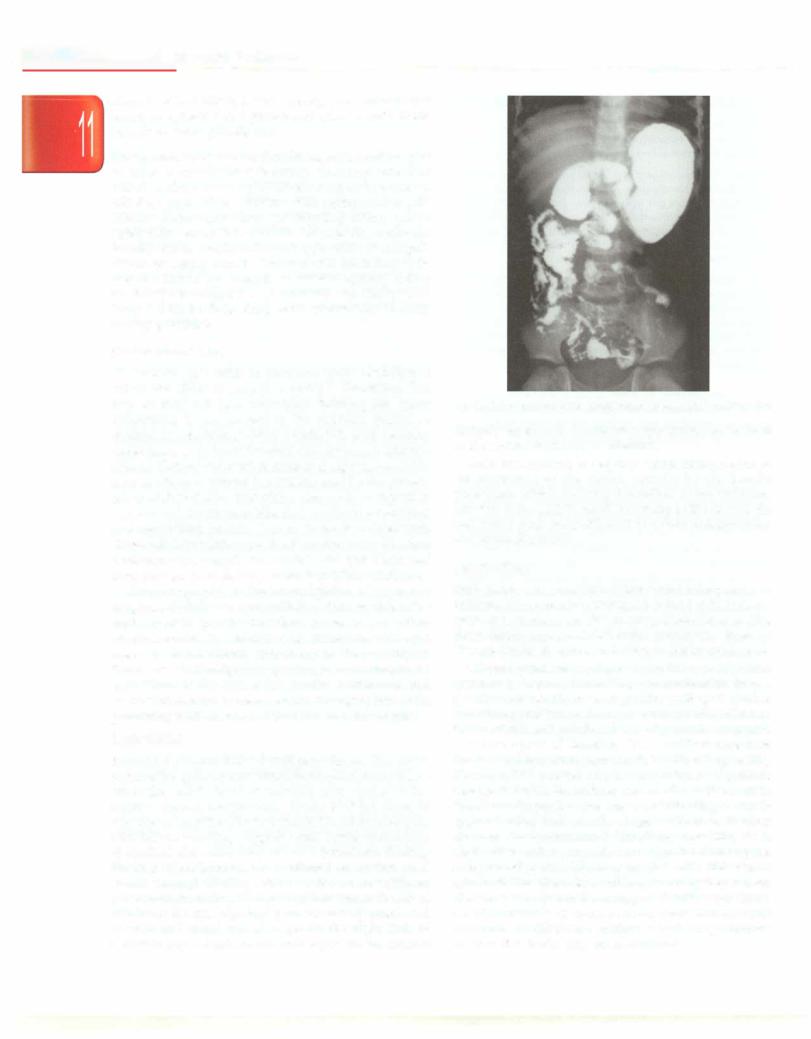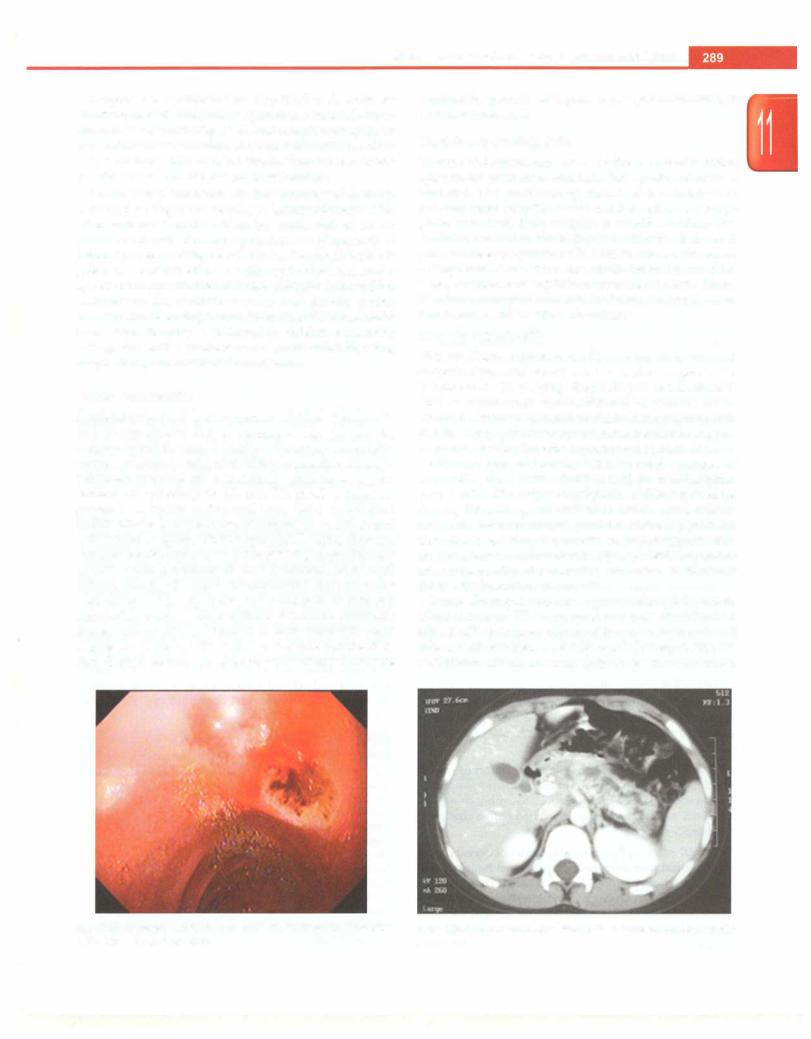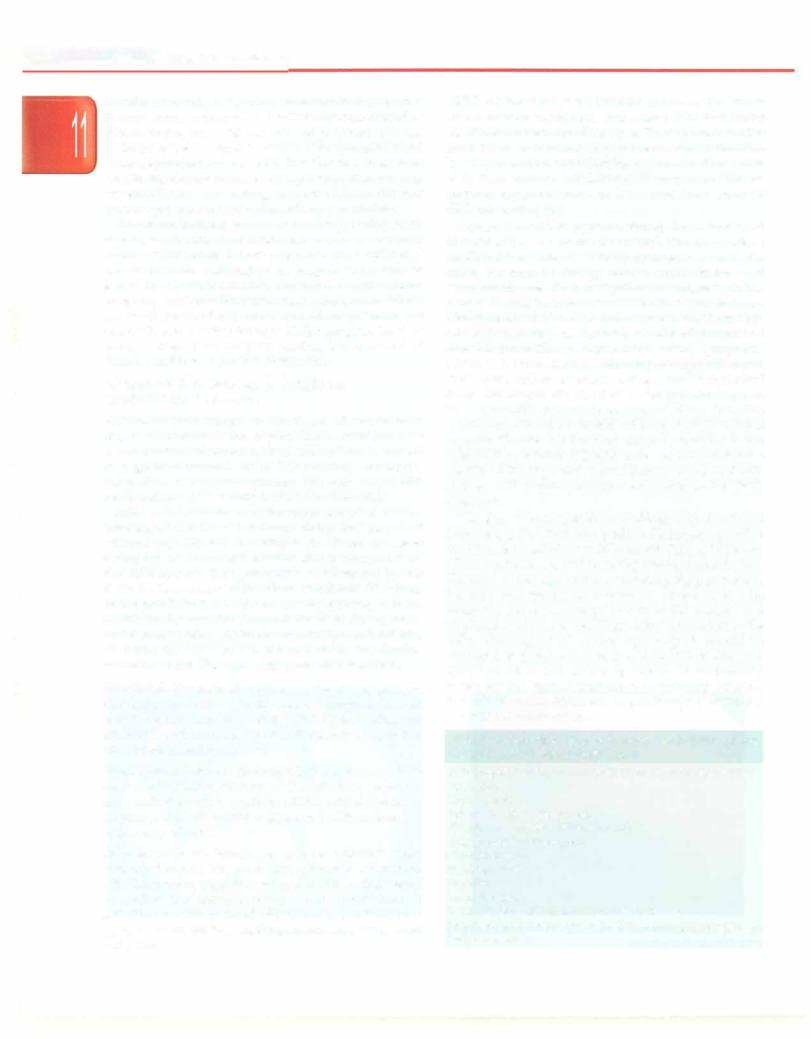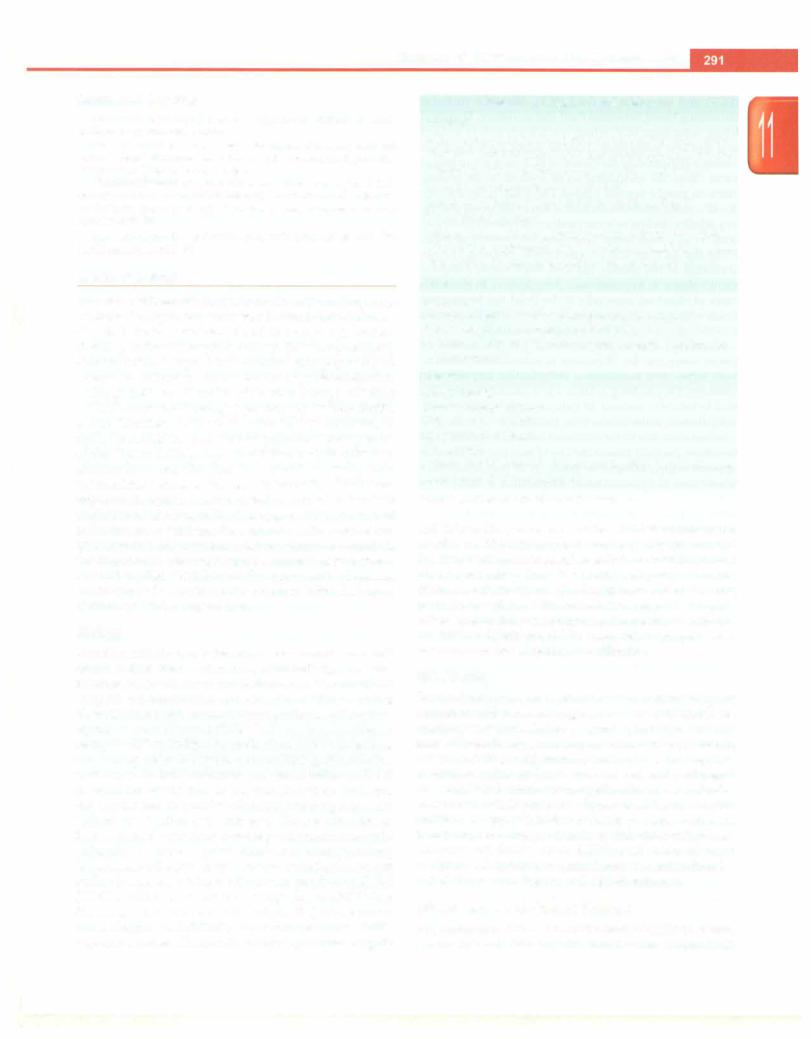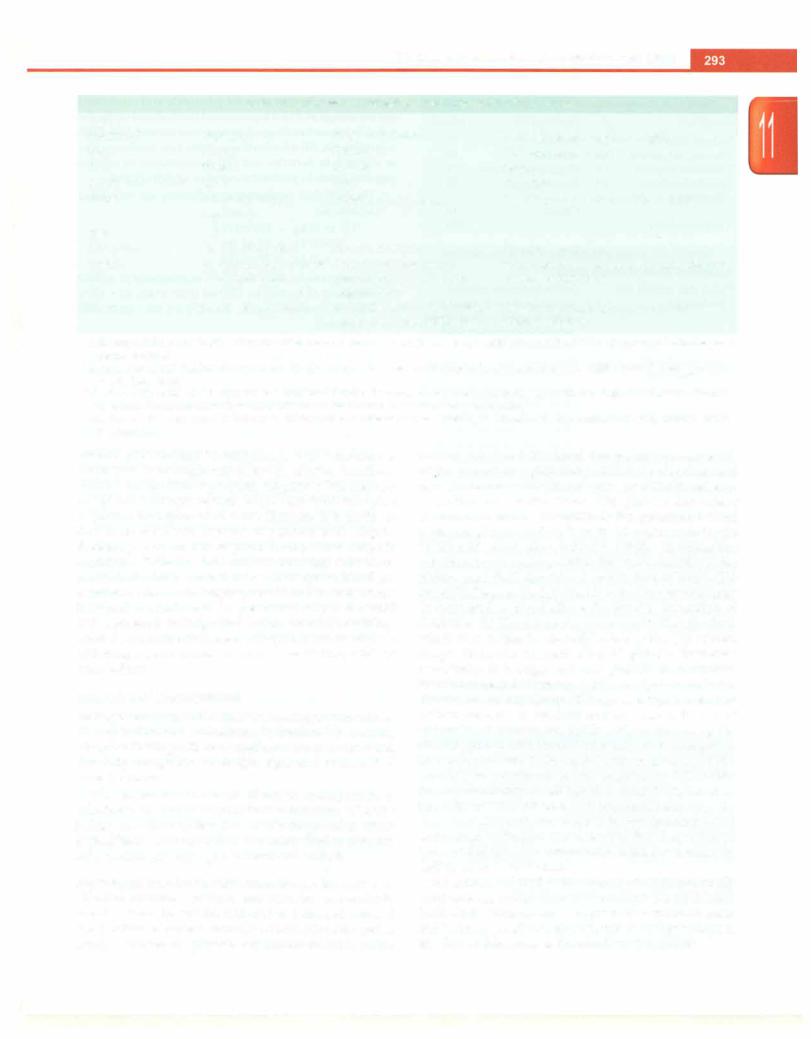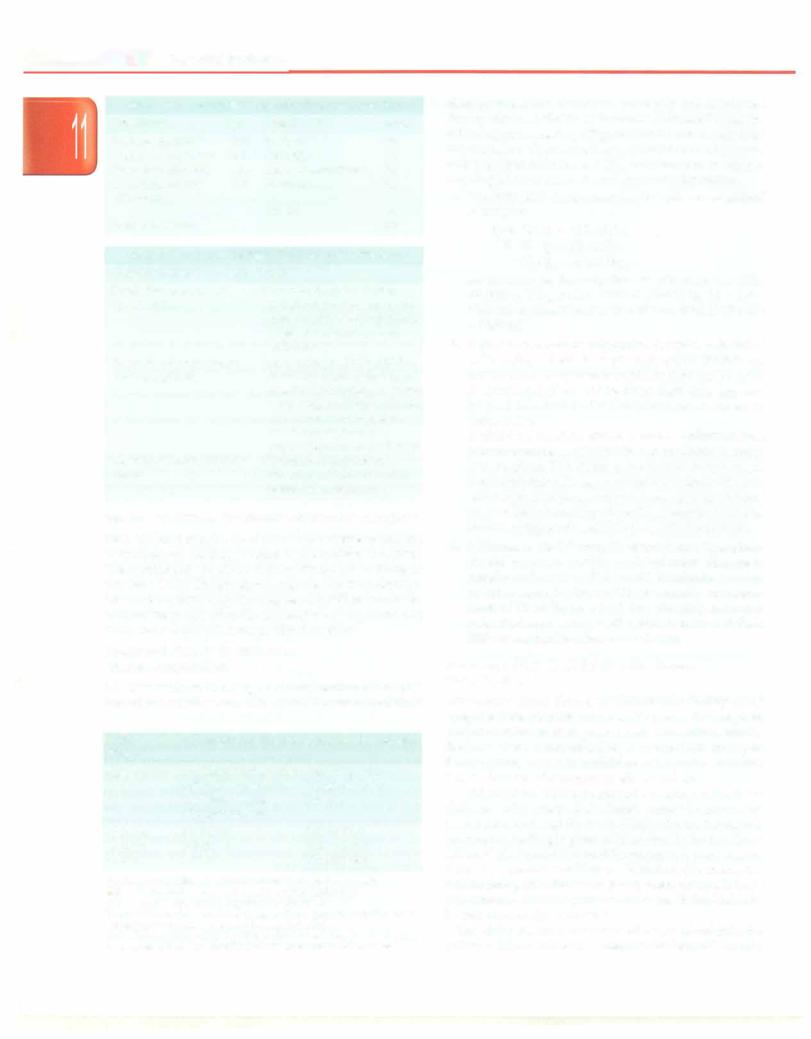
Ghai Essential Pediatrics8th
.pdf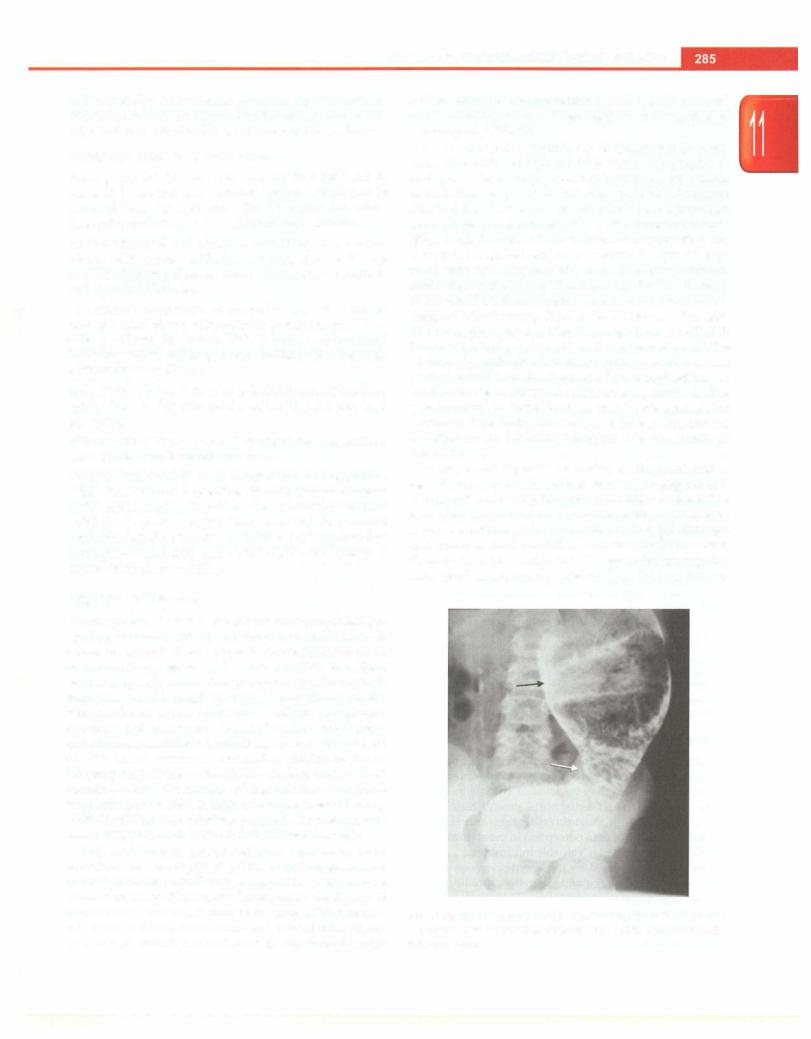
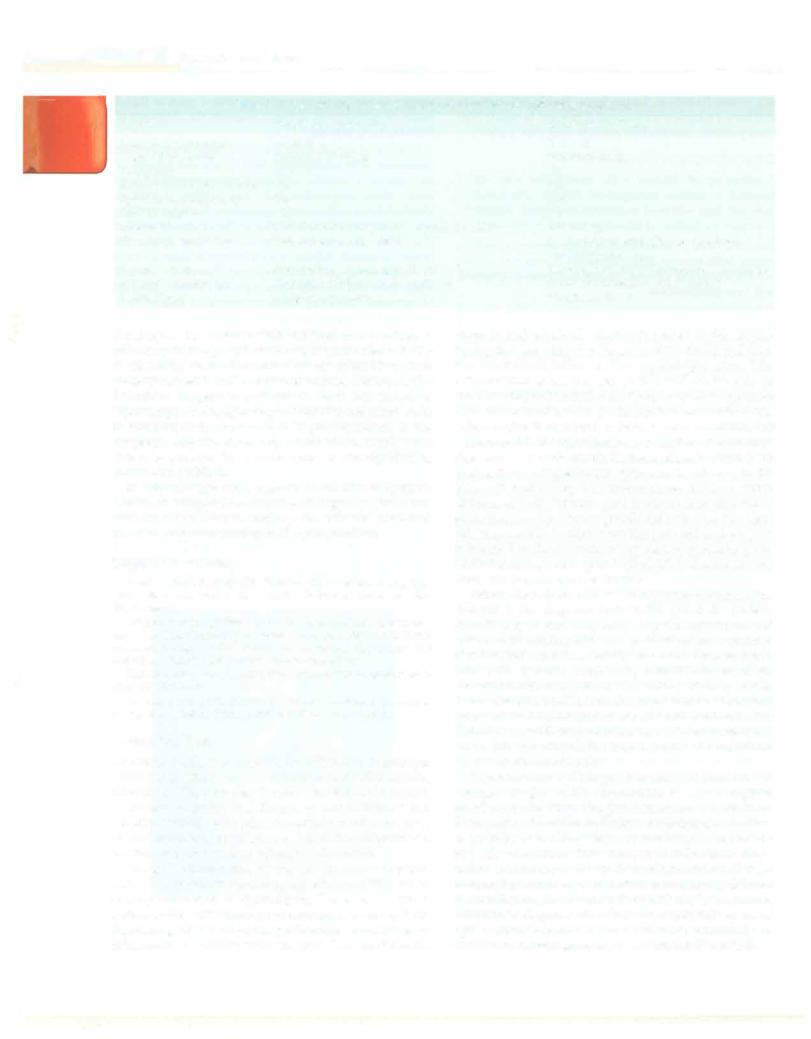
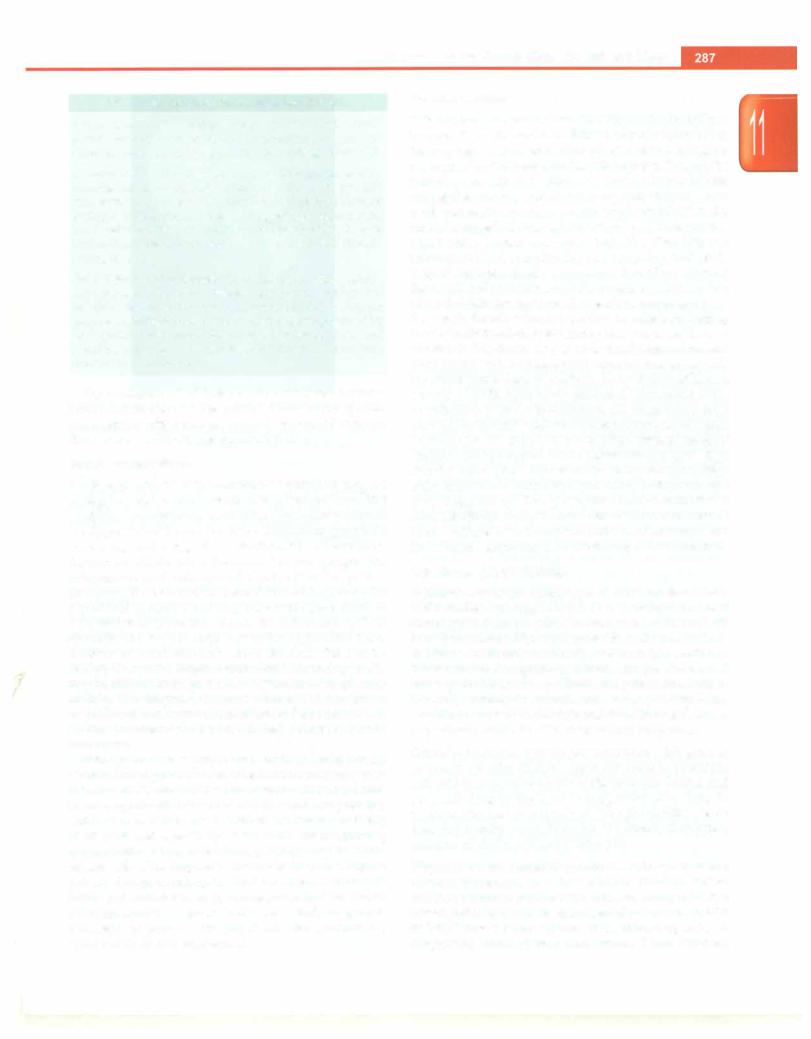
Diseases of Gastrointestinal System and Liver |
||
Table 11.5: Common causes of abdominal pain |
lntussusception |
|
Infants and young children (<2 yr of age): Colic, acute |
This is acommoncause of intestinal obstruction in children |
|
between 3 months and 6 yr. Intussusception refers to the |
||
gastroenteritis, intussusception, malrotation of gut with |
||
volvulus, incarceratedhernia, trauma, necrotisingenterocolitis |
telescoping of a proximal segment of intestine (intussus |
|
Preschool children (2-5 yr of age): Acute gastroenteritis, urinary |
ceptum)intoadistalsegment (intussuscipiens).Thismaybe |
|
ileocolic, colocolic or ileoileal.Most cases occur in infants |
||
tract infections, constipation, intussusception, acute appendi |
||
during the weaning period following introduction a new |
||
citis, malrotation of gut with volvulus, intestinal perforation |
||
food, vaccination or upper respiratory tract infection. An |
||
with peritonitis, choledochal cyst, lower lobe pneumonia, |
||
areaofenlargedsubmucosal Peyer'spatch probablyactsas |
||
incarcerated hernia, torsion testis, acute pancreatitis, diabetic |
||
ketoacidosis, Henoch-Schonlein purpura, Meckel diverti |
a lead point. Beyond two years of age, the possibility of a |
|
culum, trauma |
submucosal lead point like lipoma and polyp that needs |
|
Older children and adolescents: Acute gastroenteritis, gastritis, |
surgical resection shouldbe considered as failure to resect |
|
them will lead to recurrence. Inflammatory conditions like |
||
acute appendicitis, Crohn disease, constipation, urinary tract |
||
Henoch-Schonlein purpura also result in intussusception. |
||
infections,dysmenorrhea,pelvicinflammatory disease,ectopic |
||
Asaresult,thereisvenouscongestion,boweledemaleading |
||
pregnancy, Mittelschmerz, renal calculi, acute pancreatitis, |
||
cholecystitis, pneumonia, trauma, early phase of acute viral |
toarterialobstruction,bowelischernia,necrosis,perforation |
|
hepatitis, testicular or ovarian torsion, intestinal obstruction, |
and shock. The classic triad of abdominal pain, red currant |
|
perforation or peritonitis |
jellystools(bloodandmucus)andpalpablemassisseenonly |
|
|
in a small percentage of children. X-ray abdomen shows |
|
The management of these acute conditions includes |
paucity of air in right lower quadrant. Ultrasound is the |
|
initial stabilization of the patient followed by specific |
investigation of choice thatconfirmsthe diagnosis ('dough |
|
management which may or may not be surgical. Some of |
nut'sign)andprovidesinformationaboutpresenceofamass |
|
these acute conditions are described briefly: |
as lead point.Vascularityof bowel is bestassessed on color |
|
Acute Appendicitis |
Doppler. Barium enema shows a characteristic 'claw' sign |
|
iftheintussusceptioninvolvescolon. Earlyreductioneither |
||
|
||
Acute appendicitis is the commonest pediatric surgical |
with saline (under ultrasound guidance), barium contrast |
|
emergency and is more common in older children. The |
(both diagnostic and therapeutic) or with air insufflation is |
|
condition is considered as occurring due to obstruction of |
advisable.Reductionwithairissaferwithlowerrecurrence |
|
the appendiceal lumen by either fecolith or lymphoid |
rates. Failure of radiological reduction or suspected |
|
tissue, e.g. following viral infection. The obstruction, |
intestinal gangrene may necessitate surgery and resection. |
|
distentionandinfectionintheappendixcausesprogressive |
Gallstones (Cholelithiasis) |
|
inflammation and, subsequently, perforation. The patient |
||
|
||
presents with fever and anorexia followed by pain in the |
Gallstones are of three main types: cholesterol stones with |
|
periumbilical area. Vomiting follows the periumbilical |
>50% cholesterol, pigment (black or brown) stones and |
|
pain, unlike in gastroenteritis. As the inflammatory fluid |
mixed types. Pigment stones are common in children with |
|
spreads, the pain is then felt in the right iliac fossa |
hemolytic anemia. High-riskgroupsfor gallstones include |
|
(McBurney point) towards which the child characteris |
children with hemolytic anemia, obesity, ileal resection or |
|
ticallypointswithafinger.A retrocecalinflamedappendix |
disease,intakeofdrugslikeceftriaxone,progressivefamilial |
|
maybe difficult to diagnose and maymanifest asspasm at |
intrahepaticcholestasistypeIII andtotalparenteralnutrition. |
|
the hip. The diagnosis is most often based on clinical |
Overall, hemolytic anemia and other predisposing |
|
suspicion after historyandexamination. Palpation reveals |
conditions account for 20-30% and 30--40% of gallstones, |
|
localized tendernessandisbest elicited if there is rebound |
respectively, while 30--40% cases remain idiopathic. |
|
tenderness. |
Clinical presentation. Typical presentation is with acute or |
|
Hemogram shows polymorphonuclear leukocytosis. |
||
recurrent episodes of right upper quadrant or epigastric |
||
Urine microscopy should bedone to rule out urinary tract |
||
pain which may radiate to the right shoulder. Icterus and |
||
infection.Abdominal ultrasounddetectsa dilated (>6 mm) |
||
pain radiating to the back is suggestive of a stone in |
||
tubular, aperistaltic structure which is not compressible |
||
common bile duct or ampullacausing pancreatitis. Fever |
||
and is surrounded by fluid. Ultrasound has a sensitivity |
||
does not usually occur; however, if present, it suggests |
||
of 85-90% and specificity of 95-100% for diagnosing |
||
presence of cholecystitis or cholangitis. |
||
appendicitis. Computed tomography may be done |
||
|
||
occasionally if the diagnosis is in doubt. In up to a third of |
Diagnosis. Serum bilirubin and alkaline phosphatase are |
|
patients, the appendix rupturesbefore surgery. Intravenous |
elevated if the stone is in the common bile duct. Raised |
|
fluids and antibiotics for gram-negative and anaerobic |
amylase suggests pancreatitis. Ultrasonography is the |
|
coverage should be given in all cases. Early surgery is |
investigation of choice for diagnosis of gallstones. MRCP |
|
necessary to prevent complications like perforation, |
or ERCP have a better accuracy than ultrasonography in |
|
appendiceal abscess and sepsis. |
diagnosing common bile duct stones. These children |
|
